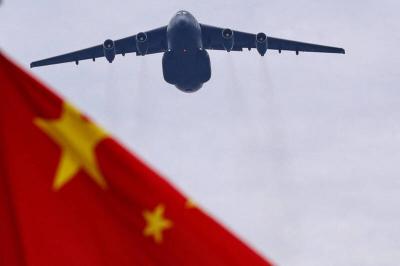The Coast Guard Administration says it is planning to discuss holding joint exercises with its Chinese counterparts in 2016, focusing on training and mobilization for rescue operations at sea.
The agency is to table a report to the legislature’s Internal Administration Committee meeting tomorrow, presenting details of its yearly programs and budget items.
The report said the cross-strait joint exercises are needed because of a surge in shipping traffic between Taiwan and China in recent years, with increasing cargo and passenger freighters using direct linking routes.
“We must also take lessons from the South Korean ferry [MV Sewol] disaster in April this year, which led to many lives lost and huge financial losses,” the report said. “The safety of crews and passengers on seafaring vessels is an important task for our units. To maintain marine traffic safety in the Taiwan Strait, both sides must plan for dialogue and communication between the respective coast guard units.”
Therefore, planning is under way for a cross-strait joint simulated sea rescue exercise in 2016, the report said.
The coast guard is also embarking on a new program, at a cost of NT$742.62 million (US$24.4 million), to upgrade and rebuild coastal radar stations that survey the shoreline of Taiwan proper.
Taiwan has 78 of these stations, mainly short-range units covering up to 24 nautical miles (44km) of offshore marine territories, the report said.
However, it added that all but one station were installed between 2001 and 2003, and had aging equipment, maintenance problems and lack of replacement parts from original manufacturers.
The coastal radar system must be revitalized by replacing old stations with new installations, which could take 10 years.
Meanwhile, coast guard units stationed on Kinmen yesterday said their patrol boats chased away a large number of Chinese fishing vessels on Friday, when they intruded into the outlying island’s marine territory.
The coast guard said it confiscated 35 trawler nets during the operation.
However, local news media have accused the coast guard of being negligent in its duty, saying that more than 100 Chinese vessels from Xiamen had stayed around for several days, plying Kinmen waters to catch schools of yellow croaker fish.
A Taiwanese fisherman surnamed Hsu (許) castigated the coast guard for only taking action on Friday.
“It seems that our coast guard units were afraid of the Chinese fishing vessels. If they are scared of confrontation, then we should just cancel the budget for coast guards, because they are a waste of taxpayers’ money,” he said.

Beijing could eventually see a full amphibious invasion of Taiwan as the only "prudent" way to bring about unification, the US Department of Defense said in a newly released annual report to Congress. The Pentagon's "Annual Report to Congress: Military and Security Developments Involving the People's Republic of China 2025," was in many ways similar to last year’s report but reorganized the analysis of the options China has to take over Taiwan. Generally, according to the report, Chinese leaders view the People's Liberation Army's (PLA) capabilities for a Taiwan campaign as improving, but they remain uncertain about its readiness to successfully seize

Taiwan is getting a day off on Christmas for the first time in 25 years. The change comes after opposition parties passed a law earlier this year to add or restore five public holidays, including Constitution Day, which falls on today, Dec. 25. The day marks the 1947 adoption of the constitution of the Republic of China, as the government in Taipei is formally known. Back then the Chinese Nationalist Party (KMT) governed China from Nanjing. When the KMT, now an opposition party in Taiwan, passed the legislation on holidays, it said that they would help “commemorate the history of national development.” That

Taiwan has overtaken South Korea this year in per capita income for the first time in 23 years, IMF data showed. Per capita income is a nation’s GDP divided by the total population, used to compare average wealth levels across countries. Taiwan also beat Japan this year on per capita income, after surpassing it for the first time last year, US magazine Newsweek reported yesterday. Across Asia, Taiwan ranked fourth for per capita income at US$37,827 this year due to sustained economic growth, the report said. In the top three spots were Singapore, Macau and Hong Kong, it said. South

Snow fell on Yushan (Jade Mountain, 玉山) yesterday morning as a continental cold air mass sent temperatures below freezing on Taiwan’s tallest peak, the Central Weather Administration (CWA) said. Snowflakes were seen on Yushan’s north peak from 6:28am to 6:38am, but they did not fully cover the ground and no accumulation was recorded, the CWA said. As of 7:42am, the lowest temperature recorded across Taiwan was minus-5.5°C at Yushan’s Fengkou observatory and minus-4.7°C at the Yushan observatory, CWA data showed. On Hehuanshan (合歡山) in Nantou County, a low of 1.3°C was recorded at 6:39pm, when ice pellets fell at Songsyue Lodge (松雪樓), a